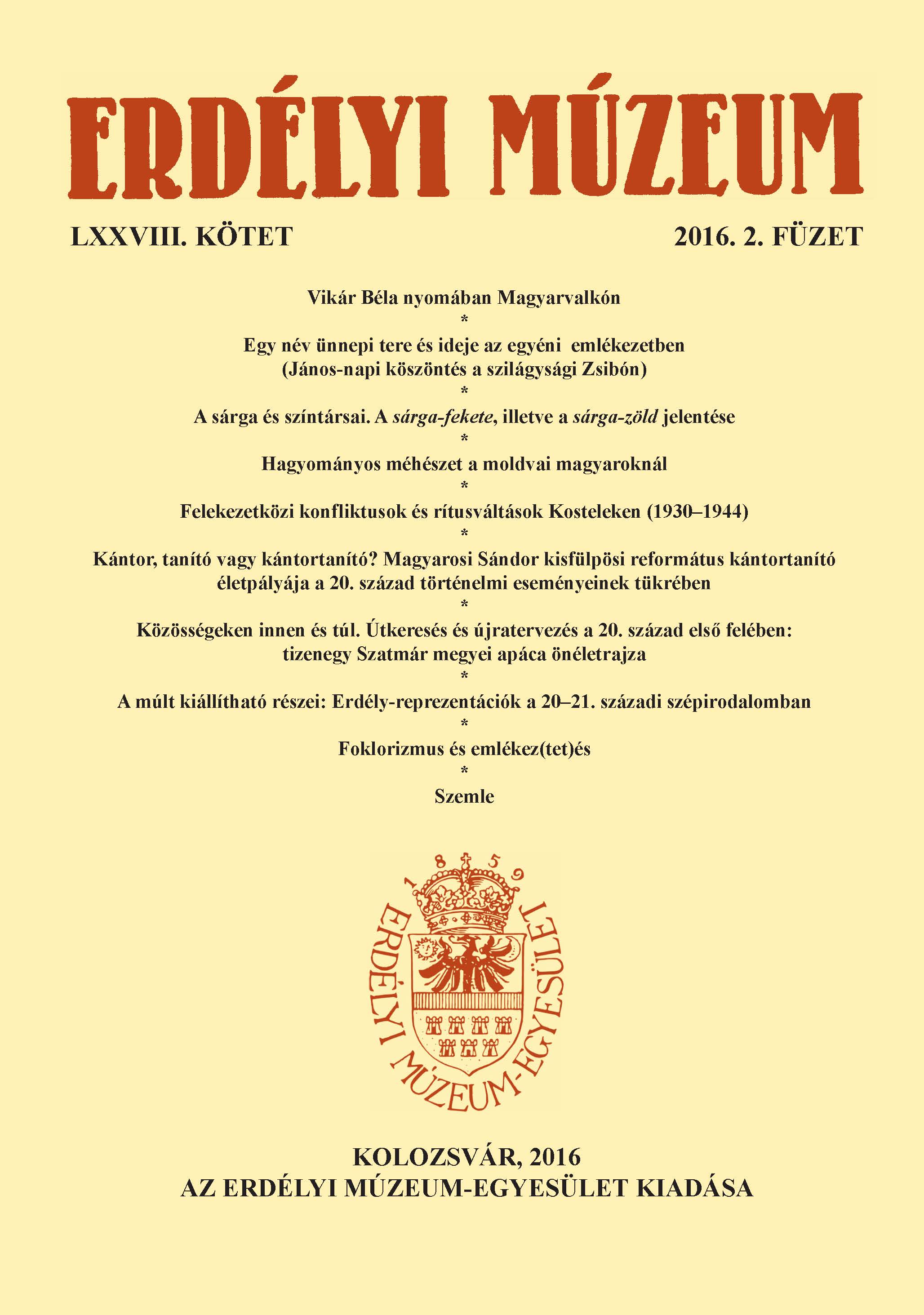Hagyományos méhészet a moldvai magyaroknál
Traditional Beekeeping at the Moldavian Hungarians
Author(s): Péter HalászSubject(s): Customs / Folklore, Culture and social structure
Published by: Erdélyi Múzeum-Egyesület
Keywords: Moldavian Hungarians; traditional beekeeping; honey; wax; catching beekeeping; artificially churns
Summary/Abstract: In recent centuries Moldavian Hungarians brought the basics of the traditional beekeeping from Transylvania to their homeland, because this peasant craft was more advanced in Transylvania than in the former Etelköz (Moldavia). In the 17th and 18th century, by spreading of Protestantism in Transylvania, wax trade directed to Moldavia, where Greek Orthodox was the major religion, had a great importance. Within Moldavia the area inhabited by mainly Roman Catholic Hungarians (Bacau County) had a prosperous honey and wax production. Until the beginning of the 20th century catching beekeeping was usual, when honey of bee colonies found in tree burrows of the forest were stolen, or the honey was taken home together with the bees, and was held and reproduced in wood churns gouged out. From these churns ( made of wad) the honey was taken out so that the bees were driven out or killed by smoke, then the honey combs, or part of them were cut off by a knife and the honey was filtered out from the wax. A more effective solution was possible by artificially produced, framed churns, at which the beekeepers could follow-up and control the life of bees, and the quantity of their food. The honey was used by the Moldavian Hungarians mainly for food seasoning and as a medicine, and from the wax they twisted especially wax candles. Both products have a great importance, because their uses were linked to many beliefs and habits, from that most served as eliminating of troubles.
Journal: Erdélyi Múzeum
- Issue Year: LXXVIII/2016
- Issue No: 2
- Page Range: 60-89
- Page Count: 30
- Language: Hungarian

